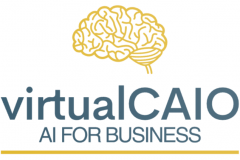As we approach 2026, agentic AI is emerging as the transformative force in artificial intelligence. Unlike traditional generative AI tools that respond to prompts, agentic AI systems are autonomous agents capable of setting goals, planning multi-step actions, reasoning through complex problems, and executing tasks with minimal human oversight. This shift from reactive chatbots to proactive “digital workers” is poised to redefine business operations, productivity, and innovation.
What Is Agentic AI?
Agentic AI refers to AI systems that pursue goals independently by perceiving their environment, reasoning about options, planning actions, and iterating based on feedback. Key components include:
- Perception: Gathering data from tools, APIs, databases, or user inputs.
- Reasoning and Planning: Using large language models (LLMs) to break down goals into steps.
- Action: Executing tasks via tools (e.g., browsing, coding, or integrating with software).
- Reflection: Learning from outcomes to improve future performance.
This creates a continuous loop of autonomy, enabling agents to handle dynamic, real-world scenarios—far beyond simple query-response interactions.
How Agentic AI Differs from Generative AI
Generative AI (e.g., ChatGPT) excels at creating content but requires constant human guidance. Agentic AI goes further:
- Autonomy: Acts without step-by-step prompts.
- Goal-Oriented: Pursues complex objectives, like optimizing supply chains or resolving customer issues end-to-end.
- Multi-Agent Collaboration: Systems where multiple agents coordinate, delegate, and negotiate.
According to McKinsey’s 2025 survey, 23% of organizations are already scaling agentic systems, with 39% experimenting—highlighting rapid adoption.
Key Trends Driving Agentic AI in 2025–2026
2025 has been dubbed the “year of agentic AI,” with pilots proliferating across enterprises. Deloitte reports that while 68% of organizations are exploring or piloting agents, only 11% are in full production—signaling a maturation phase ahead.
Major trends include:
- Multi-Agent Ecosystems: Agents collaborating across functions (e.g., sales, finance, operations) using frameworks like CrewAI or LangGraph.
- Integration with Enterprise Tools: Deeper embedding in platforms like Salesforce, ServiceNow, and Snowflake for workflow automation.
- Edge and Neuromorphic Computing: Enabling faster, more efficient autonomous decisions in real-time scenarios.
- Governance and Human-in-the-Loop: Emphasis on controls to mitigate risks, as Gartner warns over 40% of projects may fail by 2027 due to costs or inadequate safeguards.
Real-world examples from 2025:
- Capital One: Deployed multi-agent workflows for faster issue resolution and reduced latency.
- Ramp: Launched finance agents for spend management and automation.
- Walmart: Scaled internal “AI Super Agents” for operational efficiency.
Predictions for 2026: Mainstream Adoption and Challenges
Experts forecast explosive growth:
- Gartner: 40% of enterprise apps will feature task-specific agents by end-2026 (up from <5% in 2025).
- Deloitte: Market could hit $8.5B in 2026, driven by ROI in productivity and decision-making.
- IBM and Forbes: Rise of “digital coworkers” in therapy, companionship, and complex tasks, with agentic systems becoming the “coordination fabric” for enterprises.
However, challenges persist: Legacy systems, data silos, and governance issues. Successful adopters will redesign processes around agents, treating them as workforce members.
Why Businesses Need a Virtual CAIO for Agentic AI
Navigating agentic AI’s complexities—strategy, governance, integration—requires expert guidance. A Virtual Chief AI Officer (vCAIO) provides fractional leadership to deploy agents responsibly, maximize ROI, and align with regulations like the EU AI Act.
As agentic AI accelerates in 2026, early movers will gain a competitive edge. Explore our resources on virtual CAIO services to get started.
Last updated: December 2025.
